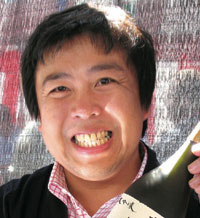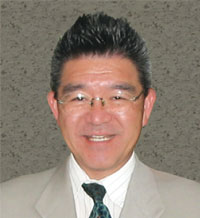Cautionary Notes for Tasting Sake
Cautionary Notes for Tasting Sake
Before sipping the sake, first inhale the sake aroma through the nose. The sake aroma that rises from the sake is also checked when tasting sake. After visually inspecting the sake, inhale the sake aroma through the nose without sipping the sake.
The impression of sake aroma is generally described by comparing the sake aroma to the scent of familiar fruits and milk products. For example, sake aroma is often compared to the scent of fruits such as apples and bananas, and milk products such as yogurt.
Sip the sake to sense the “4 flavors”
Finally, check the sake ‘flavor.’ Sip a small quantity of sake and confirm the texture (taste) and sake aroma that passes through the nose.
Be sure to grasp the thickness, smoothness, and texture of the sake as well.
Next, swirl the sake all over your tongue to check the sweetness, acidity, umami flavor, and bitterness of the sake flavor. First, grasp the intensity or subtlety of the sweetness. Then, check the balance between sweetness and acidity, umami flavor, and bitterness (some sake may hardly have any bitterness at all), in order to confirm the impression of the sake flavor.
Lastly, check the lingering “after flavor” of the sake.
During sake tastings, professionals generally sip the sake and spit it out after sampling. When tasting sake at home, it’s ok to swallow the sake after tasting.
テイスティングの注意点
口に含む前に鼻で香りをきき分ける。テイスティングでは、日本酒から立ち上る香りもチェックします。目でチェックしたあとは、口に含まず、鼻で香りを感じ取りましょう。
香りの印象は、身近なものにたとえて表現するのが一般的です。たとえば、りんごやバナナなどの果物や、ヨーグルト(乳製品)などにたとえられます。何の香りに近いのかイメージしながら、香りを確認してみてください。
日本酒を口に含んで、「4つの味」を感じとる
いよいよ「味わい」のチェックです。日本酒を少量口に含み、テクスチャー(飲み口)や鼻から抜ける香りを確認します。とろみやなめらかさなどの舌触りも捉えましょう。
それから、日本酒を舌全体にいきわたらせて、甘味、酸味、旨味、苦味をチェック。まずは、最初に感じられる甘味の強弱を捉えます。それから甘味と酸味のバランス、旨味、苦味(苦味がほとんど感じられないものもあります)と、順番に印象を確認していきます。最後に、「アフターフレーバー」と呼ばれる余韻も意識して感じとりましょう。
プロが行うテイスティングでは、口に含んだあとに日本酒を吐き出すのが一般的ですが、自宅で挑戦する場合はそのまま飲み込んでしまってもよいでしょう。
口に含む前に鼻で香りをきき分ける。テイスティングでは、日本酒から立ち上る香りもチェックします。目でチェックしたあとは、口に含まず、鼻で香りを感じ取りましょう。
香りの印象は、身近なものにたとえて表現するのが一般的です。たとえば、りんごやバナナなどの果物や、ヨーグルト(乳製品)などにたとえられます。何の香りに近いのかイメージしながら、香りを確認してみてください。
日本酒を口に含んで、「4つの味」を感じとる
いよいよ「味わい」のチェックです。日本酒を少量口に含み、テクスチャー(飲み口)や鼻から抜ける香りを確認します。とろみやなめらかさなどの舌触りも捉えましょう。
それから、日本酒を舌全体にいきわたらせて、甘味、酸味、旨味、苦味をチェック。まずは、最初に感じられる甘味の強弱を捉えます。それから甘味と酸味のバランス、旨味、苦味(苦味がほとんど感じられないものもあります)と、順番に印象を確認していきます。最後に、「アフターフレーバー」と呼ばれる余韻も意識して感じとりましょう。
プロが行うテイスティングでは、口に含んだあとに日本酒を吐き出すのが一般的ですが、自宅で挑戦する場合はそのまま飲み込んでしまってもよいでしょう。




